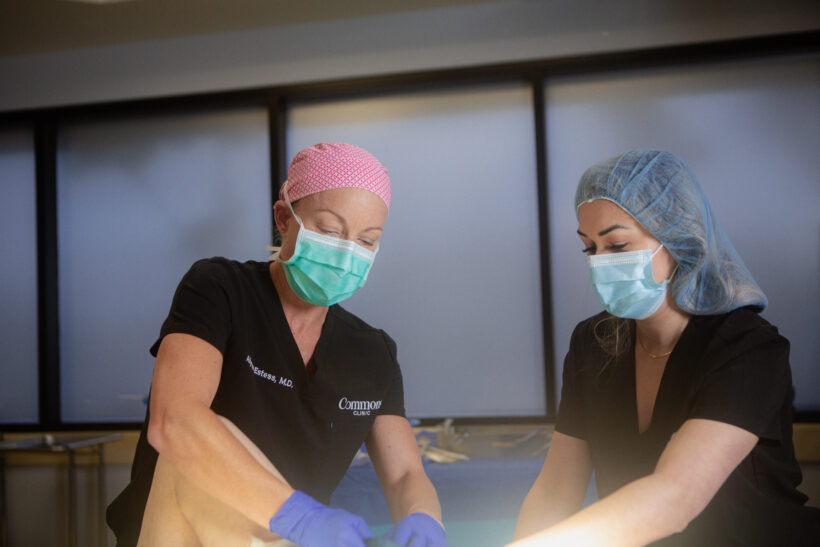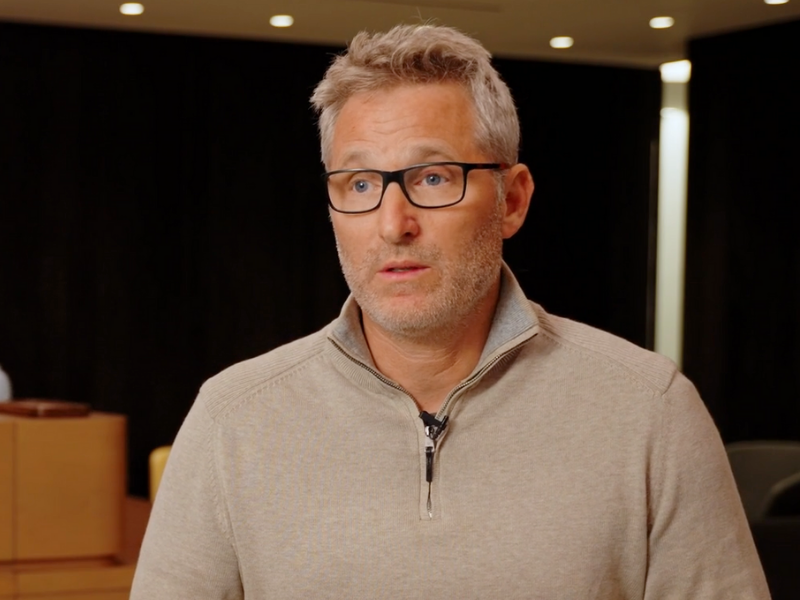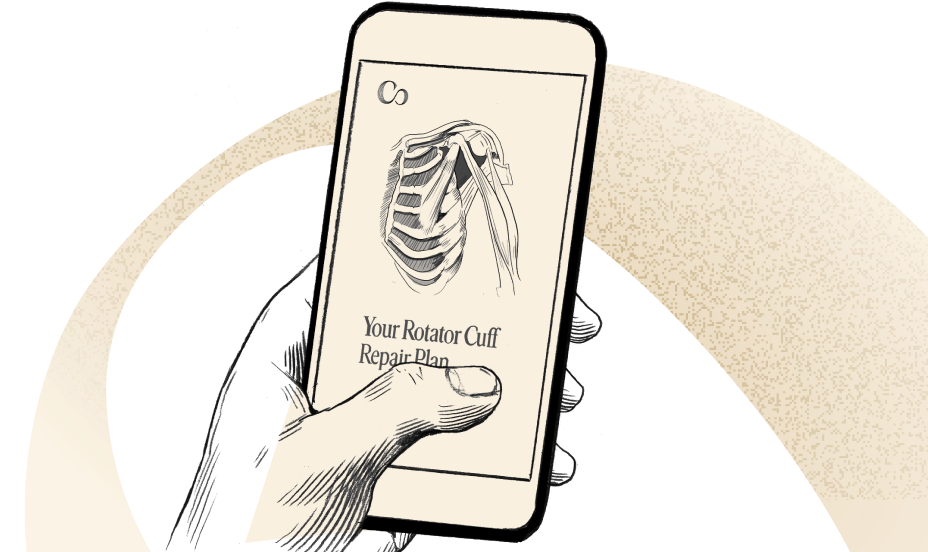Shoulder Arthroscopy 101: Procedure and What to Expect
Arthroscopic shoulder surgery can help restore joint function and prevent future damage. Here's what the procedure involves and how to determine if it's right for you.
Living with shoulder pain can limit your function and have a negative impact on your quality of life. Whether you are dealing with frozen shoulder, a torn rotator cuff, or another type of ailment in the joint, shoulder arthroscopy may be able to help. Shoulder arthroscopy is a minimally invasive surgical procedure that your physician may recommend to diagnose or treat issues in the shoulder joint.
If you’re considering arthroscopic shoulder surgery, or your physician recommends the procedure, it’s important to learn more about what it entails. Find out what to expect before, during, and after the procedure. This can help you determine if shoulder arthroscopy is right for you.
What is arthroscopic shoulder surgery?
Shoulder arthroscopy is a minor surgical procedure that involves inserting a tiny camera — an arthroscope — into the shoulder joint. Arthroscopic shoulder surgery is used to inspect the joint, diagnose a medical issue, and treat joint problems. It’s the second most common orthopedic procedure behind knee arthroscopy.1,2
Shoulder arthroscopy uses small incisions compared with traditional open-shoulder surgery that relies on a larger incision to access the joint. Open shoulder surgery may be a better fit for certain situations, including shoulder replacement, but also injured tendons, ligaments, or the labrum, among other issues.
On the other hand, arthroscopic shoulder surgery is better for certain conditions (like repairing a rotator cuff or labrum), is less complex to perform due to a smaller incision, leads to less pain, comes with a lower infection risk, and provides a faster recovery. 3 With technological advances, more shoulder surgeries are being performed arthroscopically.
Arthroscopic shoulder surgery is ideal for treating some injuries in the rotator cuff, ligaments, tendons, and the labrum (soft tissue or cartilage that surrounds the shoulder socket). It can release nerves and treat shoulder impingements. The procedure is also used to remove the labrum, inflamed tissue, cysts, pieces of bone, or loose cartilage. Some physicians use shoulder arthroscopy for chronic shoulder instability, which occurs when a shoulder dislocates frequently.
Shoulder arthroscopy is sometimes used to diagnose rotator cuff tears, labral tears, frozen shoulder, and shoulder impingement syndrome. Using arthroscopy for diagnostics is rare because most physicians know exactly what they’re dealing with when they suggest the operation.
Peter McCann, MD, an orthopedic surgeon who is director of orthopedic surgery and director of orthopedic strategic initiatives at Lenox Health Greenwich Village in New York City, says physicians receive permission from patients before surgery to address other issues found during the procedure.
“It’s extremely rare to just go take a look with an arthroscope,” McCann says.
Anatomy of the Shoulder Joint
Think of your shoulder like a masterfully engineered machine – it’s a ball-and-socket joint that twists, turns, and rotates more freely than any other joint in your body. Much like your hip, but with even more impressive flexibility, this remarkable joint lets you reach, stretch, and move in almost any direction.4
The shoulder joint includes the acromioclavicular joint and the glenohumeral joint. The acromioclavicular joint is where the acromion — a bone along the shoulder blade — meets the clavicle, or collarbone. The glenohumeral joint is where the humerus — the upper bone in the arm — joins the glenoid, which is a part of the scapula or shoulder blade bone.
The space between the acromion and rotator cuff tendon is known as the subacromial space, and it’s a spot known for injuries. When that space becomes narrowed, you may experience shoulder impingement syndrome. This syndrome is one of the most common causes of shoulder pain.5
Both the joint and soft tissue in the shoulder can experience injuries. For example, rotator cuff surgery is common for injuries to the muscles and tendons that connect the humerus to the scapula. Rotator cuff muscles ensure the humerus stays in the socket, or glenoid. Tendons connect bone and muscle, and muscles move bones when they pull on the tendons. Another example: Lining the glenoid is soft tissue known as the labrum. A joint capsule, or fluid-filled sac, surrounds the shoulder joint and includes ligaments.6
Conditions Treated with Arthroscopy
“Shoulder arthroscopy is an established surgical procedure that brings precise care and quicker recovery times together for positive patient outcomes,” says Eric Millstein, MD, a board-certified orthopedic surgeon at Commons Clinic.
Arthroscopic shoulder surgery can treat some of the same conditions as open surgery. Your physician can tell you which type of surgery is best for your case. Physicians use it to treat:
- Frozen shoulder: Also known as adhesive capsulitis, this condition is caused by inflammation that makes your shoulder joint thicken and tighten so it feels stiff and/or painful. Physicians use shoulder arthroscopy to cut through and release tight parts of the joint capsule to restore movement and relieve pain.7
- Labrum tears / shoulder instability: Your physician may choose shoulder arthroscopy to fix a tear in the labrum — the cartilage that surrounds the shoulder socket — that can cause shoulder instability or regular dislocation. This is also known as a superior labrum, anterior to posterior (SLAP) tear. The tear may involve a shoulder dislocation. In that case, the surgeon will suture the torn labrum to the glenoid bone and could put anchors into the bone so it stays put. They may use debridement when fixing a tear, which removes frayed tissue or scar tissue.8, 9, 10
- Rotator cuff tears: Physicians use shoulder arthroscopy to fix torn rotator cuff tendons that have partially or fully torn. During the procedure, they reattach the tendon to the bone. The suture anchors help with the attachment and stay in the body after surgery.11, 12
- Shoulder impingement syndrome: This condition occurs when bones in your shoulder pinch the rotator cuff, causing pain. Rotator cuff tendinitis, shoulder bursitis, and a deformity in the acromion are types of shoulder impingement syndrome. The syndrome usually arises due to overuse. Surgery to treat this usually involves relieving pressure on the rotator cuff, so your physician may recommend arthroscopic shoulder decompression, which removes part of your acromion to make more room for the rotator cuff.13
- Osteoarthritis: The physician can remove excess cartilage or smooth out bone spurs that can interrupt movement if you have osteoarthritis in your shoulder.14
- Biceps tendon disease: If the biceps tendon becomes inflamed, frayed, or tears, the surgeon may suggest arthroscopic shoulder surgery to give you relief. Because some of the bicep muscles go through the joint, an injury to it can be painful. The arthroscope can be used to release the tendon (tenotomy) or reattach it to a new spot.15
- Other conditions: Arthroscopic shoulder surgery is typically used for injuries, but it can also be used for debridement — to remove any excess material like scar tissue, pieces of bone, or cartilage — that can accompany injury. The procedure is less commonly used to release a nerve or remove a cyst.
- Diagnostic arthroscopy: Additionally, the procedure can be used to diagnose problems before they’re repaired, but is less common for the diagnosis process.
Preparing for Surgery
Before scheduling your shoulder arthroscopy, you’ll need to take several important steps to ensure the best possible outcome. From determining if you’re a good candidate and choosing the right surgeon to preparing for the procedure and knowing which questions to ask, proper planning helps set you up for successful surgery and recovery.
Who is a good candidate for arthroscopic shoulder surgery?
Your orthopedic surgeon can tell you if you should consider the procedure based on factors like the extent of your injury and your medical status. The physician can also determine if you need it for diagnostic or treatment purposes. Age, overall health, and lifestyle factors play important roles in this decision. Athletes and active individuals may be good candidates if they need to return to sports or physical activities quickly.
Your surgeon will also consider whether you’ve tried other treatments first, since arthroscopy isn’t always the first choice for shoulder problems. Generally, if you have a painful condition that hasn’t responded to nonsurgical treatments such as medication, rest, and/or physical therapy, arthroscopy may be a good choice for you.
Choosing a surgeon and medical facility
Choosing a surgeon and a medical facility that you trust can give you peace of mind and positive outcomes. Search for an orthopedic surgeon who is board certified and has experience with arthroscopic shoulder surgery. Opt for a medical facility that is accredited so you know the facility adheres to strict safety standards. Look at rankings to get an idea of factors such as customer experience and success rates. You can also browse reviews online from individuals who have had procedures there to see if the practice has a good reputation.
Other ways to help you find a trusted orthopedic surgeon include asking your primary care physician for a referral. Friends and family members may give good recommendations as well. You can also check with your health insurance company or local hospital to see who they recommend. The orthopedic surgery practice website may give you useful information about the physicians’ credentials and how the surgery process works. All of these can give you insight about the experience so you feel good about the physician you choose and know what to expect.
At Commons Clinic, we’ve built out our website so you can access a wide range of details about our clinics, surgeons, and rehabilitation options. We believe these details can empower you to understand everything about your procedure so you can focus on recovery.
“Our physicians go through all of your options and give you our professional recommendation so we can decide which treatment is best for the patient,” Millstein says.
How to prepare for surgery
Here’s the refined text with reduced redundancy:
Once you’ve decided on arthroscopic shoulder surgery, you can take several steps to prepare for the procedure. Good preparation helps ensure optimal recovery and provides peace of mind.
Your orthopedic surgeon may ask you to see your primary care physician to check for other medical problems. A specialist evaluation may be needed if you have specific concerns, like heart or bleeding issues, to ensure your body is ready for surgery.
Ask the physician or orthopedic practice about necessary pretests, such as blood work or an electrocardiogram. These will determine if you need to stop any medications or supplements before the arthroscopy.
The practice should provide specific instructions about the procedure and preparation. You’ll also want to understand the financial expectations. Commons Clinic offers all-inclusive pricing so you’ll know exactly what you’ll pay.
Questions to ask your surgeon
It’s normal to have questions about your surgery. Asking questions lets you gather more information so you know what to expect before, during, and after the procedure.
If you’re considering shoulder arthroscopy, you may want to ask your orthopedic physician:
- Are there any non-surgical options that will work for me?
- Am I a candidate for open surgery or arthroscopic surgery? Why or why not?
- If you’re able to diagnose my shoulder issue during the procedure, will you fix it then, too?
- If there’s anesthesia involved, what kind do you use and what side effects can I expect?
- How many incisions do you think I’ll need?
- Do I need to stop taking any medicines or supplements before the arthroscopy?
- What tests will I need to have before the procedure?
- How long does the procedure last?
- What out-of-pocket costs can I expect?
- Where do you perform the arthroscopy?
- What side effects can I expect after the procedure?
- Will I need post-surgical rehabilitation?
- How long will I need physical therapy?
- How long after surgery can I resume usual activities?
The Surgical Procedure
Understanding what happens during shoulder arthroscopy can help you prepare for the procedure and know what to expect as you recover. It’s a good idea to have a general idea of how your doctor will repair your shoulder joint, what pain you may feel, and what you’ll need to do to recover after the procedure.
How shoulder arthroscopy is performed
Shoulder arthroscopy uses small incisions rather than the larger ones needed for open surgery. While less invasive, it remains a surgical procedure.
Your physician will discuss using anesthesia, a nerve block, or both to prevent pain during the procedure. 18 A nerve block injection in your neck or shoulder can numb your arm and shoulder, also helping with post-surgery pain. Your surgeon may add a general anesthetic to put you to sleep during the procedure.
Once prepped, the surgeon makes an incision into your shoulder joint and injects fluid to better view bones, ligaments, tendons, and other structures. The physician then inserts an arthroscope — a device with a camera — into the joint. The camera displays the shoulder joint on a monitor to guide the operation. The surgeon may make additional incisions to insert tiny surgical instruments for cutting, grinding, and suturing — all guided by the camera.
The surgeon closes the incisions using traditional stitches or Steri-Strips, which are adhesive strips applied topically. The area is then covered with a bandage.
Tools used in arthroscopic shoulder surgery
In addition to the arthroscope, the surgeon may make another incision. Through that second opening — and using the camera for guidance — the physician may insert tiny surgical instruments like knives to shave, cut, or grip. Some tools can anchor stitches into bone or insert anchors.
Surgeons typically position patients in one of two ways for arthroscopic shoulder surgery. You may be seated in a reclining posture (beach chair position), or you may lie on your side on the operating table (lateral decubitus position). The physician determines the best position based on your injury and access to the injured site.
The procedure typically takes less than two hours and is usually done on an outpatient basis. Most people leave the clinic or hospital the same day, depending on the surgery’s complexity and any complications.
Rehabilitation and Physical Therapy
After surgery, you’ll need to follow your physician’s orders and will likely have follow-up visits to monitor your progress. You may need to wear an arm sling temporarily to protect your healing shoulder.
Recovery tends to be quicker after shoulder arthroscopy than after open surgery because of the smaller incision and lower infection risk. Still, improved function and recovery can take one to six months.
You may experience pain for several weeks after surgery. Your care team may recommend ice for pain and swelling. Your physician may also suggest prescription or over-the-counter pain medication.
You will receive instructions on wound care. Since lying flat may be uncomfortable, sleeping in a reclined position shortly after the procedure may help.
Shoulder surgery rehabilitation
Rehabilitation is critical for proper healing and optimal range of motion. Physical therapy often starts soon after surgery because moving the joint is essential for recovery. Your therapy may be outpatient, in-home, or virtual, depending on your needs. Regaining full range of motion and strengthening muscles around the shoulder can take one to six months.
Commons Clinic offers rehabilitation and physical therapy on-site or virtually from experienced physical therapists. This integrated approach eliminates the need to coordinate with separate practices.
Risks and Complications
Like any surgical procedure, arthroscopic shoulder surgery carries risks, though fewer than open surgery. These stem from your medical status, the procedure itself, or post-operation infections.
Some risks of arthroscopic shoulder surgery include:
- Weakness or stiffness in the shoulder
- Nerve or blood vessel injury
- Cartilage damage
- No symptom relief
- Infection
- Bleeding (hematoma) or blood clots
- Medication interactions
- Breathing issues from anesthesia
- Poor healing or wound complications
- Bone fracture
- Implant failure
Post-operative care is essential to manage your recovery proactively. Your surgeon will schedule follow-up appointments after your arthroscopy to monitor your progress and can take steps to address any complications.
What’s Next for Shoulder Arthroscopy
Dr. McCann says biologics — medications made from living cells or organisms — may play a huge role in helping people heal after rotator cuff surgery, since some don’t heal even with perfect surgical technique.
“There’s a high rate of non-healing back to the bone even when technically everything is done perfectly,” he says.
Some research centers are studying how to use biologics such as platelet-rich plasma (PRP) containing growth factors, though more research is needed to prove their effectiveness.17
“Our thinking now is to figure out a way to enhance tendon healing,” McCann says. Some surgeons are trying to use biologics, but more research is needed to pinpoint which ones work best.
Frequently Asked Questions (FAQs)
What are the indications for shoulder arthroscopy?
The procedure is used to diagnose and treat a wide range of shoulder issues. These include rotator cuff tears, frozen shoulder, shoulder impingement syndrome, and shoulder instability.
Is shoulder arthroscopy the same as rotator cuff repair?
Not quite. Shoulder arthroscopy is a minimally invasive medical procedure that can repair a torn rotator cuff. Some rotator cuff procedures require open surgery with a larger incision and longer recovery.
What are the disadvantages of arthroscopic shoulder surgery?
Some people do not achieve complete healing after the procedure. You may not regain full range of motion or may have lingering pain, but you may still have better function than before surgery.
How bad is the pain after shoulder arthroscopy?
Each patient’s experience differs. Ice the shoulder and take over-the-counter or prescription pain medications temporarily. Your physician will determine the best protocol for post-surgery pain.
How long does it take to recover from arthroscopic shoulder surgery?
Recovery depends on your procedure. If you have complex surgery requiring more incisions than expected or the physician needs to fix additional issues during the operation, recovery could take longer. Generally, people may return to some normal activities within a few days after shoulder arthroscopy.
Conclusion
Shoulder arthroscopy can diagnose and repair a wide range of shoulder issues. It’s a minimally invasive procedure that comes with fewer risks than traditional open shoulder surgery. Most procedures require only two or three small incisions, compared with the longer incisions needed for open surgery.
That said, it’s still a surgery. People who get arthroscopic shoulder surgery tend to recover more quickly, have lower risk of infection, and can resume daily activities sooner than with open surgery. The smaller incisions typically mean less pain and scarring, while the advanced camera technology allows surgeons to see and treat problems with precision.
Talk to your physician to see if arthroscopic surgery is right for you. An orthopedic surgeon can help you choose the best solution for your shoulder injury. The decision often depends on factors like your specific condition, overall health, and whether you’ve tried nonsurgical treatments first.
Sources
American Academy of Orthopedic Surgeons. Shoulder Arthroscopy.
Crimmins IM, Mulcahey MK, O’Brien MJ. Diagnostic Shoulder Arthroscopy: Surgical Technique. Arthrosc Tech. 2019;8(5):e443-e449. doi: https://doi.org/10.1016/j.eats.2018.12.003
Cleveland Clinic: Shoulder Arthroscopy.
Johns Hopkins Medicine. Anatomy of a Joint.
Creech, J, Silver, S. Shoulder Impingement Syndrome. 2024. StatPearls Publishing.
Washington University Physicians. The Anatomy of the Shoulder.
American Academy of Orthopedic Surgeons. Frozen Shoulder.
Cleveland Clinic. SLAP Tears.
NYULangone Health. Shoulder Labral Tears.
NYULangone Health. Surgery for Shoulder Dislocation.
MedlinePlus. Rotator cuff repair.
Mount Sinai. Shoulder arthroscopy.
Cleveland Clinic. Shoulder Impingement (Rotator Cuff Tendinitis).
NYULangone Health. Surgery for Osteoarthritis of the Shoulder.
Washington University Physicians. Common Conditions that Require Shoulder Arthroscopy.
Shin JJ, Popchak AJ, Musahl V, Irrgang JJ, Lin A. Complications After Arthroscopic Shoulder Surgery: A Review of the American Board of Orthopaedic Surgery Database. J Am Acad Orthop Surg Glob Res Rev. 2018;2(12):e093. doi: http://10.5435/JAAOSGlobal-D-18-00093
Goldenberg BT, Lacheta L, Dekker TJ, Spratt JD, Nolte PC, Millett PJ. Biologics to Improve Healing in Large and Massive Rotator Cuff Tears: A Critical Review. Orthop Res Rev. 2020;12:151-160. doi: http://10.2147/ORR.S260657







 (562) 348-4588
(562) 348-4588